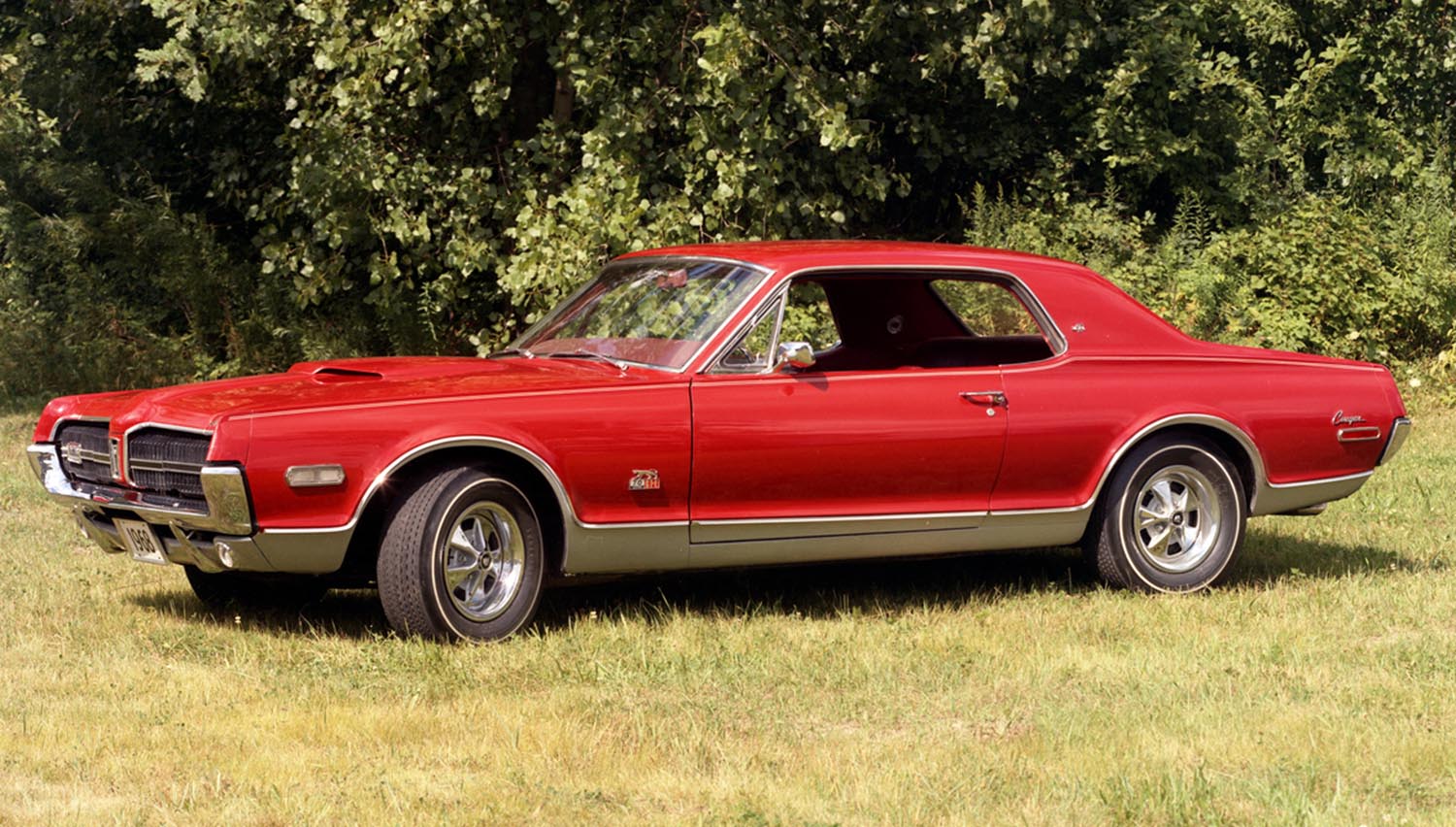
In the fiercely competitive late-1960s American automotive market, Mercury sought to carve out its own niche. The Cougar, launched in 1967, was Mercury’s sophisticated answer to the Mustang. However, for 1968, the brand decided to stop merely suggesting performance. It unleashed a beast in a tuxedo: the 1968 Mercury Cougar XR-7 GT-E.
This exclusive model perfectly merged the Cougar’s refined, European-influenced styling with uncompromised, race-bred horsepower. Consequently, the GT-E instantly became the ultimate, high-performance iteration of Mercury’s elegant pony car.
The Cougar’s Initial Identity and Purpose
The original Cougar was designed to be more upscale than its Ford Mustang platform-mate. It featured a three-inch longer wheelbase than the Mustang. This, plus its concealed headlights and signature sequential taillights, gave it a unique identity. This positioning elevated the Cougar’s image beyond the typical youth-oriented muscle machine.
The XR-7 trim level further emphasized this luxury focus for the Cougar line. This package added a host of features like a simulated wood-grain dashboard and full instrumentation. It successfully positioned the XR-7 as a comfortable and well-appointed personal luxury coupe.
The Birth of the GT-E Performance Package
The GT-E package was introduced midway through the 1968 model year to address the era’s relentless horsepower war. Mercury clearly needed a halo car to compete with the fiercest muscle car rivals. Hence, the GT-E was the ultimate solution to satisfy the most power-hungry customers.
This rare package was available on both the standard Cougar and the top-tier XR-7 models. It immediately signaled to enthusiasts that this specific Cougar was something entirely different. The GT-E’s mechanical and cosmetic enhancements went far beyond a standard GT-equipped car.
Subtle Visual Clues for the GT-E
Unlike some muscle cars of the time, the GT-E’s visual changes were surprisingly restrained. This allowed the car to maintain the Cougar’s inherently sophisticated aesthetic. Furthermore, these changes simply provided subtle hints to the immense power lurking underneath the hood.
Exterior Distinctions of a Rare Feline
The package featured unique lower body paint, typically argent silver, separated by chrome trim from the main body color. Furthermore, a specific power-dome hood provided necessary clearance for the massive engine block. The quad exhaust outlets and GT-E badging completed the distinct exterior look.
A blacked-out grille with a singular horizontal chrome strip also distinguished the GT-E from other Cougars. Therefore, while not overtly flashy, the design struck a perfect balance between elegance and aggression. It remains a masterclass in understating raw power.
Race-Bred Engineering: The Legendary 427 V8
The most important element of the GT-E package was the engine, the formidable 427 cubic inch V8. This legendary engine, known as the “side-oiler,” was a direct connection to Ford’s racing pedigree, especially at Le Mans and in NASCAR. This connection immediately established the GT-E’s performance credibility.
Early production models of the GT-E all featured this 427 engine. It was an expensive, high-performance motor that was solely paired with a heavy-duty C6 automatic transmission. This combination ensured a robust and reliable transfer of its immense power to the rear wheels.
The Mid-Year Cobra Jet Swap
Due to the high cost and eventual discontinuation of the 427 by Ford, a change was implemented midway through 1968. Consequently, the last few GT-E models were instead equipped with the new 428 Cobra Jet V8 engine. This substitution further cemented the GT-E’s status as a unique, transitional model.
The 428 Cobra Jet was officially rated lower than the 427. Nevertheless, it was a highly capable engine known for its significant real-world power output. In fact, many collectors today covet both the 427 and the 428 Cobra Jet versions for their distinct heritage and rarity.
Performance and Handling Enhancements
The GT-E was not just about straight-line speed; handling upgrades were also significant. A standard Super Competition Handling Package ensured the Cougar could manage its substantial power. This comprehensive package offered a much improved and focused driving experience.
Suspension and Braking Capabilities
The package included heavy-duty shock absorbers, stiffer springs, and a larger-diameter sway bar for better control. Moreover, power steering and standard power front disc brakes improved both driver comfort and safety. These components were essential for taming the big-block engine’s aggressive nature.
The Rarity That Defines The 1968 Mercury Cougar XR-7 GT-E
Only a limited number of GT-E models were ever produced for the 1968 model year. This extreme scarcity contributes greatly to the car’s current status as an automotive icon. The low production run guarantees its desirability among serious collectors today.
Production Figures and Collectibility
Only 394 total GT-Es were manufactured; 357 with the 427 engine and a mere 37 with the 428 Cobra Jet. This low volume, combined with the upscale XR-7 trim, makes the 1968 Mercury Cougar XR-7 GT-E a pinnacle classic. Finding a fully documented survivor is a significant event in the collector world.
Engine Specifications and Performance Highlights
The early 1968 Mercury Cougar XR-7 GT-E featured the 427 cubic inch V8 “side-oiler.” This engine was officially rated at 390 horsepower and an impressive 460 lb-ft of torque. Power was routed through a mandatory Select-Shift Merc-O-Matic C6 three-speed automatic transmission. The later 428 Cobra Jet V8, while underrated at 335 horsepower, provided a similar level of thrilling acceleration. Its quarter-mile times were consistently quick, placing the GT-E in the elite company of the muscle car segment’s heavy hitters.
A Testament to Mercury’s Ambition
The 1968 Mercury Cougar XR-7 GT-E represents a singular moment in Mercury’s history. It is an enduring testament to the brand’s ambition to infuse genuine, race-ready performance into a luxurious grand touring package. Its unique blend of comfort, style, and massive big-block V8 power makes it stand out. The GT-E remains a highly valued and coveted classic, one of the rarest and most potent American muscle cars of its legendary era.
Disclaimer: Content on this site is for informational purposes only. Vehicle specs, pricing, and availability may change. Always verify details with official sources before making decisions. Opinions are those of the authors.
Source: Ford Heritage Vault
